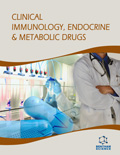
Abstract
Background: The discovery of fullerene by the end of 20th century has revolutionized nanoscience and nanotechnology. Since the inception of fullerene it has been one of the most attractive natural carbon molecules for the researchers from biological, biomedical fields and other varied industries. Fullerene is one of the allotropic forms of carbon. The physical and photo-electro-chemical properties of fullerene make nanomaterials suitable for biological and biomedical applications.
Observations: Fullerene and its related compounds exhibit quite intense interaction with free radicals and it is considered as “radical sponge”. Fullerene molecules have the capacity to undergo chemical reactions and most of the interactions are related to either donate and/or accept the electron. Pristine fullerene is hydrophobic in nature and it gets agglomerated in aqueous medium resulting in the formation of its suspension. The interaction between fullerene and water is basically related to their specific properties like spatial, orientational dynamics, surface properties etc. Its utility is enhanced by its ability of forming water soluble derivatives. The existing derivatives of fullerene have become a significant research tool in the current scenario due to the enhanced multifaceted properties.
Result: In almost all cases there exists correlation between the physicochemical properties of the product and the interacting biosystem. The impact or effect of the product may be toxic, neutral or good in nature to the organism. Fullerene and its derivatives exhibit various efficacies as generator and scavenger of ROS, RNS, antimicrobial, imaging agent, antiviral, toxic, drug delivery agents, etc. Fullerene and its derivatives interact with various biomolecules. These interactions may interfere with cell signaling process and cell functioning. This natural carbon allotropic form exhibits dual behavior that is related to the degree of efficacy of ‘covalently functionalized' water soluble form of fullerene.
Conclusion: In this article, an effort is made to survey the impact of this multifaceted allotropic form of carbon with reference to biosystem.
Keywords: Astrochemistry, buckminster fullerene, fullerene, fullerenol, hydrophobic and hydrophilic forms, oxidase en-zyme, radical sponge, scavenger for ROS and RNS.
 52
52 2
2 1
1 1
1



